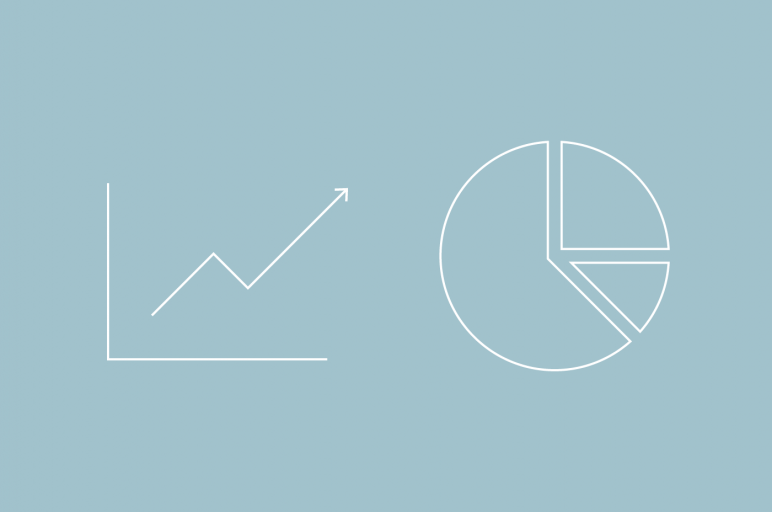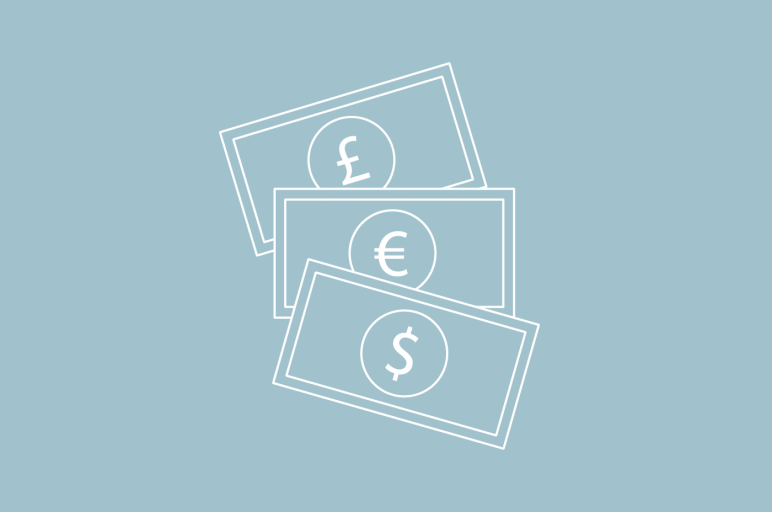- What are ETF issuers?
- Who are the biggest ETF issuers?
- Which issuers are growing the fastest?
- Which issuer earns the most money?
- ETF Issuer Summary Table
What are ETF issuers?
ETF issuers are the businesses that build and ‘issue’ the ETFs to the public via the ASX. There are ~40 ETF providers in the Australian market, supplying over 250 ETFs for investors to use. Our job is to pick the best products on the market, which is why we adopt a best of breed approach to recommending ETFs to our clients from a range of issuers.
At Stockspot, we choose the best ETFs from the ETF issuers in Australia to create a high-performing ETF portfolio.
Who are the biggest ETF issuers?
In 2022, Vanguard and iShares (BlackRock) continue to dominate the ETF market in Australia with the largest funds under management (FUM). BetaShares has consistently been gaining traction over the last few years after taking the third spot from SPDR in 2019. Combined, the top three issuers account for 63% of all money invested in ETFs.
VanEck lept into the fifth spot in terms of most popular ETF issuers, knocking our SPDR who have not invested heavily in their product offering in Australia.
We saw the rise of more active managers (such as Resolution Capital, Alliance Bernstein and Australian Ethical) looking to package their funds as an ETF solution given the tax and liquidity advantages. Magellan and Hyperion have led the charge in this area, and now have $13.8b and $2.2b in FUM respectively, despite Magellan seeing its FUM drop by $1.4b due to poor performance and consistent outflows.
| TOP 5 ISSUERS | FUM ($B) MAR’22 | ANNUAL CHANGE IN FUM ($B) FROM MAR’21 |
| Vanguard | 39.1 | +11.1 |
| iShares | 24.6 | +3.9 |
| BetaShares | 22.2 | +6.4 |
| Magellan | 13.8 | -1.4 |
| VanEck | 10.2 | +3.3 |
Which issuers are growing the fastest?
The non-major ETF issuers (i.e. those outside of Vanguard, iShares, BetaShares, SPDR, VanEck, ETF Securities and Russell) account for 19% of the Australian ETF market, up from 6% three years ago.
However, it’s likely we’ll see other ETF issuers gain market share. Additionally, as mentioned above, there will also be more active managers who are increasingly turning to ETFs as a way to structure their investment products.
ASIC has also created a favourable environment for active managers, by allowing them to hide their portfolio holdings (delaying disclosure to a quarterly basis instead of daily) and without the need to have an external market maker.
Hyperion
Hyperion grew their assets the most by an incredible 92% in 2022. This is attributable to its sole actively managed global growth fund – the Hyperion Global Growth Companies Fund (Managed Fund) (HYGG) which was converted to an ETF last year.
VanEck
In terms of the major players, VanEck was another standout, increasing its size by 48% over the last 12 months. Despite only launching two products over the last year, VanEck are trying to offer exposure to popular trends or themes. Most of VanEck’s increase came from their quality-focused ETF (QUAL) which increased in size by over $1b.
Vanguard
Vanguard is still the dominant ETF issuer in Australia, after seeing an increase of $11.1b (39% year on year growth).
The majority of this was driven by money pouring into the Vanguard Australian Shares Index ETF (ASX: VAS), which is the largest ETF in Australia. VAS took in over $2.3b over the year.
Vanguard’s share of netflows increased from 27% last year to 41% this year. Investors are trusting Vanguard’s philosophy of simple ETFs rather than being swayed into nicher thematic or smart beta products.
BetaShares
BetaShares grew their assets by 41% over the past 12 months, and now manages $22.2b of Australian ETF money. Their consistent release of new products (now with 70 products available), marketing prowess, as well as strong performance and flows for their ETFs, has helped deliver another phenomenal year in accumulating asset size. They also took in the second-highest net flows of $6b.
Which issuer earns the most money?
Australian ETF issuers make a lot of money, and we wanted to find out just how much. We took the cost of each of the issuer’s underlying ETFs in their product suite and multiplied this by the total respective FUM in each ETF to get an annual revenue estimate.
ETF issuers made an annual revenue of over $550m from their management fees, with the top five revenue-making providers accounting for 78% of the total revenue pool.
Index ETFs have distributed most of the gross returns made to investors, whereas active ETFs keep more of their gross returns as fees. For example, Vanguard and SPDR fees reflect approximately 2-3% of the ETF gross returns over the last year. Active fund managers like Magellan, K2 Asset Management, and Montgomery Investment Management can keep as much as 40% of the gross returns. This is one reason why we don’t recommend active funds to our clients.
ETF Issuer Summary Table
| Issuer | Number of Products | FUM ($m) Mar’21 | FUM ($m) Mar’22 | Annual change in FUM ($m) | Annual change in FUM (%) |
| ActiveX | 2 | $548.8 | $926.4 | $377.5 | 69% |
| Antipodes | 1 | $24.4 | $413.5 | $389.1 | 1593% |
| BetaShares | 70 | $15,806.1 | $22,229.5 | $6,423.4 | 41% |
| eInvest | 5 | $53.3 | $105.0 | $51.7 | 97% |
| ETF Securities | 20 | $3,381.2 | $4,758.5 | $1,377.3 | 41% |
| Fidelity | 2 | $222.6 | $311.7 | $89.2 | 40% |
| Intelligent Investor | 3 | $152.9 | $260.9 | $108.0 | 71% |
| iShares | 36 | $20,702.2 | $24,636.6 | $3,934.4 | 19% |
| K2 | 2 | $13.0 | $27.2 | $14.3 | 110% |
| Magellan | 10 | $15,232.8 | $13,822.6 | -$1,410.2 | -9% |
| Montgomery Investment Management | 2 | $116.5 | $107.3 | -$9.3 | -8% |
| Morningstar | 1 | $122.8 | $142.6 | $19.8 | 16% |
| Perth Mint | 1 | $509.1 | $663.3 | $154.2 | 30% |
| Platinum | 2 | $539.1 | $451.0 | -$88.1 | -16% |
| Russell | 5 | $946.5 | $947.9 | $1.4 | 0% |
| Schroder | 2 | $82.2 | $126.2 | $44.1 | 54% |
| SPDR | 17 | $7,443.0 | $8,478.5 | $1,035.5 | 14% |
| Switzer | 2 | $117.5 | $91.1 | -$26.4 | -22% |
| VanEck | 30 | $6,903.8 | $10,237.3 | $3,333.5 | 48% |
| Vanguard | 30 | $28,094.2 | $39,148.7 | $11,054.5 | 39% |
| WCM | 1 | $248.1 | $314.2 | $66.2 | 27% |
| Loftus Peak | 1 | $167.2 | $209.4 | $42.3 | 25% |
| Munro Partners | 3 | $54.7 | $204.7 | $150.0 | 274% |
| Hyperion | 1 | $1,148.2 | $2,209.9 | $1,061.7 | 92% |
| Perpetual | 2 | $0.0 | $3.9 | $3.9 | N/A |
| Monash | 1 | $0.0 | $27.8 | $27.8 | N/A |
| Fat Prophets | 1 | $0.0 | $3.5 | $3.5 | N/A |
| Janus Henderson | 3 | $44.8 | $105.2 | $60.4 | 135% |
| Loomis, Sayles & Company | 1 | $0.0 | $25.5 | $25.5 | N/A |
| Nanuk | 1 | $0.0 | $647.8 | $647.8 | N/A |
| Resolution Capital | 1 | $0.0 | $1,393.1 | $1,393.1 | N/A |
| Australian Ethical | 1 | $0.0 | $3.6 | $3.6 | N/A |
| AllianceBernstein | 1 | $0.0 | $1,609.1 | $1,609.1 | N/A |
| Cosmos | 1 | $0.0 | $2.4 | $2.4 | N/A |
| Talaria | 2 | $0.0 | $608.7 | $608.7 | N/A |
| Coolabah | 1 | $0.0 | $455.3 | $455.3 | N/A |
| Elstree | 1 | $0.2 | $18.9 | $18.7 | N/A |




